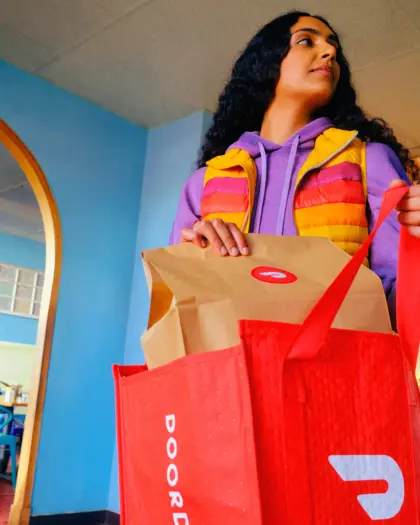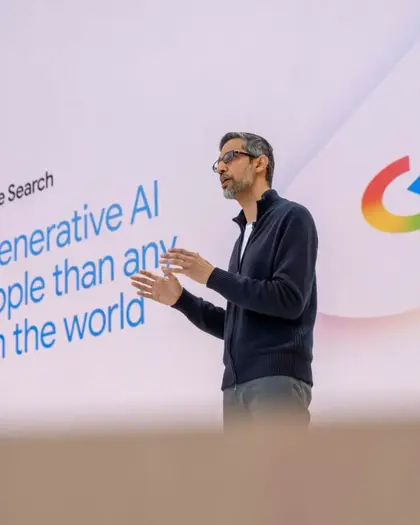I remember exactly when AppLovin first spiked onto my radar. Google’s own performance-marketing teams, usually unflappable, were suddenly whispering about a “tiny” rival whose app-install campaigns were outperforming AdMob on the very devices where Google once wrote the rules. That rival’s name kept surfacing in client Slack channels, media-buyer group chats and back-of-napkin revenue forecasts. So I pulled the thread. What I found is a masterclass in guerrilla strategy, market psychology and data-driven execution, the kind of blueprint founders dream about and incumbents dread.
The Numbers That Forced Google to Blink
- App-install ads are worth tens of billions to Google, yet year-on-year growth flat-lined in 2023. Internal post-mortems pointed to one culprit: AppLovin.
- From 2022 to 2024, AppLovin’s ad revenue tripled to $3.2 billion while Google’s total ad take hit $264.6 billion. A sliver, yes, but a sliver on a hockey-stick trajectory.
- Wall Street noticed. AppLovin stock soared 712 % in 2023 and another 24 % so far in 2025, punching its market cap to $136 billion, >double the combined value of Pinterest, Reddit and Snap.
- MoPub’s $1.05 billion acquisition in 2022 yanked a major supply pipe away from Google and Twitter, herding publishers (and their user data) into AppLovin’s yard overnight.
- Unity’s ad division, once bolstered by IronSource, saw revenue drop 10 % in 2024 to $1.2 billion; over the same window AppLovin’s rose 75 %.
- On the ground, media buyers report ~8 % daily uplift in eCPM after switching, plus six-figure cash incentives simply to migrate.
Stats like these don’t just impress investors, they ripple through every conversation a performance marketer has about channel mix and budget allocation. Remember the bandwagon effect? Money follows momentum.
A Four-Move Gambit That Exploited Google’s Blind Spot
1. Keep What Works, Skip What Hurts
Google’s 2019 self-imposed ban on IP-based user-tracking, meant to appease regulators, created a vacuum. AppLovin sidestepped the prohibition, letting advertisers still target by IP, especially critical on iOS after Apple torched device-level IDs in 2021. Performance soared; Google’s on iPhones “sucked big time,” as one agency growth director put it. Result: AppLovin’s share of his clients’ spend jumped from single digits to 25 % in under three years. Cognitive bias leveraged: availability, buyers chase the channel that’s visibly driving ROAS right now.
2. Buy the Pipes, Not Just the Water
Acquiring MAX (in-app bidding tech) in 2018 and MoPub in 2022 let AppLovin control both demand and supply. In-app bidding alone lifted auction pressure, and prices, across every impression, a direct wallet-share hit to AdMob. Shutting MoPub the week the deal closed concentrated inventory even faster. Bias: scarcity, the fewer independent pipes remain, the more valuable AppLovin’s becomes.
3. Pile On Publisher Incentives
Imagine a mid-tier studio clearing $50k/day from ads. AppLovin waves a $200k-plus annual bonus to switch SDKs, then proves an 8 % revenue lift day-one. That’s reciprocity bias and loss-aversion in the same stroke: take the money and fear missing incremental yield.
4. Market Gravity via Serial M&A
By 2024 AppLovin, Unity + IronSource, and Google were the last major mobile-ad exchanges standing. Publishers dislike integration drag; they prefer a single partner who already talks to every DSP. Market share snowballed as studios consolidated their ad stacks, easier QA, one invoice, larger data co-ops. Network effects compound. So do switching costs.
Google’s Counter-Moves, And Why They May Be Too Late
Google finally reversed its IP ban in December, citing “privacy-enhancing technologies.” Translation: revenue bleed had become urgent. It quietly rolled out AdMob Pro, bundling concierge support and cash credits, essentially an about-face on the notion that “superior product needs no bribes.” It also launched a new unskippable ad format that prolongs time-to-dismiss, mirroring AppLovin, though one AAA publisher has already refused over UX concerns. When an incumbent copies your UX and your incentive plan, momentum has truly shifted.
Yet Google’s hands remain tied:
- Regulatory ballast: active antitrust cases in ad tech and search mean every aggressive move invites extra scrutiny.
- Sheer mass: policy changes roll out globally, not selectively, so every tweak risks billions in other verticals.
- AI-led search erosion: as chatbots redirect queries, Google must conserve political capital for its core engine.
While the giant recalibrates, AppLovin races ahead, exactly the speed vs. scale asymmetry Clayton Christensen warned incumbents about.
Deeper Strategic Signals Marketers Should Watch
- Spend Velocity on iOS versus Android: After Google’s policy U-turn, watch whether iOS ROAS parity narrows. If AppLovin still wins, its edge is more than policy; it’s algorithmic.
- Ad Format Arms Race: Both firms now push longer dwell or richer interactive units. Expect a rebound in user fatigue metrics and app-store rating volatility; whoever manages UX trade-offs best will keep share.
- Cross-Vertical Expansion: AppLovin’s early ecommerce tests rival Meta’s CPAs for certain DTC brands. If that holds, the TAM balloons far beyond gaming. We’ll see Shopify and BigCommerce sellers quietly pilot AppLovin traffic next.
- Publisher Cash-Incentive Inflation: If Google forces a bidding war for publisher loyalty, margins compress, great for studios, brutal for exchanges. Track the offers landing in inboxes; they reveal whose model is most defensible.
How Other Companies Can Leverage AppLovins Approach
- Exploit Asymmetry in Your Own Sector
Look for policies your category leader obeys that customers never asked for. Match AppLovin’s play: maintain legal compliance but deliver the performance the incumbent can’t, or won’t, match. - Bundle Value with Tangible Guarantees
AppLovin didn’t only promise higher eCPMs. It prepaid cash. Guarantees galvanise action when proof is still anecdotal. Consider risk-reversal mechanics, freemium tiers, clawback clauses, to spark trial. - Acquire the Bottlenecks
M&A isn’t just for giants. Buying a small but critical integration layer (think payments add-on, data-pipe vendor) can throttle a rival’s access or improve your own margins overnight. - Leverage Compounding Psychological Triggers
Reciprocity + scarcity + social proof beats a single incentive every time. Make sure your funnel stages layer biases rather than rely on one hook. - Instrument Real-Time Performance Proof
AppLovin’s rise accelerated because buyers saw results in dashboards within days. Prioritise engineering resources on transparent ROI reporting; nothing travels word-of-mouth faster than screenshots of outperforming metrics.
The Wider Stakes
Google will not cede mobile ad dollars willingly. It still owns the operating system, the Play Store, and most of the pipes between search intent and app download. But the $264 billion juggernaut has shown a crack. When regulators, privacy norms and internal process slow a behemoth’s reflexes, insurgents like AppLovin slip through. Market share shifts first at the margins, then all at once when budgets re-anchor on new baselines.
For founders, CMOs and growth teams, this saga is a live tutorial: incumbents are most vulnerable where their reputation forbids them from moving fastest; challengers win by marrying data advantage to bold acquisition strategy and pragmatic psychology. AppLovin didn’t invent anything Google couldn’t build, it simply moved where Google hesitated and paid partners handsomely to move with it.
That’s how you turn a policy gap into a $136 billion valuation, and why the smartest money in performance marketing now runs split-tests that include, maybe even prioritise, AppLovin over the old default. The mobile battlefield just got interesting again.








































